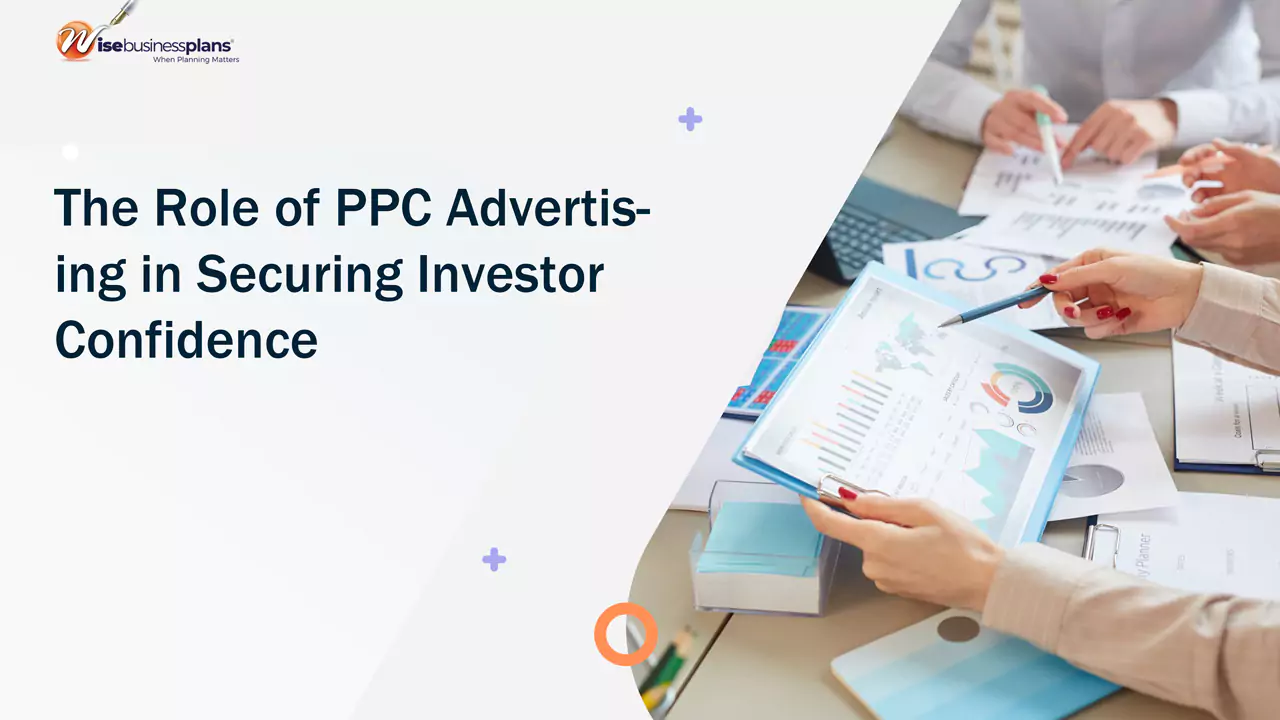The Role of PPC Advertising in Securing Investor Confidence
Table of Contents
- Demonstrating Market Traction Through PPC
- Measurable Signs of Demand
- Fast Feedback That Builds Trust
- Market Fit in Motion
- Enhancing Credibility Through Expert PPC Execution
- Proving Scalability with Predictable Spend
- PPC as a Strategic Differentiator
- Reducing Investor Risk Perception
- Telling a Stronger Story in the Pitch Deck
- Incorporating PPC Insights in the Business Plan
- How to Frame PPC Results for Investors
- Visuals That Tell the Story
- Where to Place the Data
- What You’ve Learned
- Wrapping Up
Investors want more than ideas. They want proof. Real numbers. Real traction. Something they can point to and say, “This works.”
PPC advertising delivers that kind of clarity. Every click, every conversion, every dollar spent tells a story. It shows what’s working in the market right now. For early-stage businesses, this performance data builds credibility fast. You’re not guessing. You’re testing and measuring. You’re learning from actual buyer behavior. That signals discipline. Investors notice.
Confidence doesn’t come from hype. It comes from control. From knowing what your cost per lead is. From seeing how traffic turns into revenue. PPC campaigns give you that feedback almost instantly. They show you which audiences convert and which offers fall flat. And when those insights shape your strategy, investors begin to trust your numbers. They trust your next move. Because you’re proving traction with every campaign you run.
Demonstrating Market Traction Through PPC
Investors don’t make decisions on potential alone. They want evidence that something works. PPC gives them that. As part of a broader digital marketing strategy, every click, impression, and conversion offers a snapshot of how the market is responding.
Measurable Signs of Demand
PPC campaigns generate data investors can evaluate. These signals don’t rely on projections or long-term bets. They reflect real actions taken by real people. When presented clearly, they help turn interest into conviction.
- Impressions: How many users saw your ad, showing overall visibility in the market.
- Click-Through Rate: The percentage of people who clicked, indicating how compelling your message is.
- Cost Per Click: What you’re paying for attention, helping assess efficiency and scale potential.
- Conversion Rate: How many visitors became leads or customers, proving message-to-market alignment.
- Cost Per Acquisition: How much it costs to gain a customer, a key investor benchmark.
- Bounce Rate: How many people left immediately, hinting at message clarity and landing page quality.
- Time on Site: How long visitors stayed, pointing to engagement and content relevance.
Fast Feedback That Builds Trust
PPC provides real-time insights. You can run small tests and gather results within days. This speed helps you adjust quickly. If a campaign performs well, you know the offer works. If it doesn’t, you have data to fix it. This cycle of testing and improving makes your growth strategy look deliberate, not reactive.
Market Fit in Motion
Early PPC traction indicates that your product addresses a problem people genuinely care about. That’s what investors need to see. You’re not hoping there’s a market. You’re showing it exists. Even modest performance proves something important: you can reach people, get their attention, and convince them to act.
When you share these results, you’re not pitching an idea. You’re sharing a process that already works. That’s what changes an investor’s mindset. It replaces risk with clarity and speculation with confidence.
Enhancing Credibility Through Expert PPC Execution
Investors watch for signals of control. They want to know if your wins can be repeated. A single spike in performance isn’t enough. What matters is whether the system behind it can scale.
That’s where expert execution comes in. A structured campaign does more than attract clicks. It tracks spend. It reveals audience behavior. It adapts when performance shifts. This kind of precision builds trust.
Startups that work with PPC management experts for eCom brands tend to run cleaner, faster tests. They adjust quickly and remove waste. That efficiency is visible in the numbers. And when results improve predictably, investors notice.
Bringing in specialists also shows focus. You’re not trying to guess your way through growth. You’re making decisions based on evidence. That reflects well on how you operate.
In the end, it’s not the click that builds confidence. It’s the system behind the click. When that system runs with intent, people start to believe the business can grow.
Proving Scalability with Predictable Spend
PPC advertising doesn’t just bring in leads. It shows what happens when you increase budget and reach more people with control and precision. Investors want to know that if they inject capital, the business will grow predictably and measurably. That is where PPC becomes invaluable.
When you can demonstrate that a consistent ad spend produces consistent results, you present a repeatable growth engine. For example, spending $5,000 per month to generate $20,000 in revenue is a strong signal. What matters more is being able to achieve that outcome month after month while gradually improving the return.
This level of predictability helps founders forecast outcomes with greater accuracy. Instead of vague promises, you can point to specific numbers. Each dollar spent brings back four. The acquisition process is known, the funnel is proven, and the growth potential is clear. For investors, that clarity builds real confidence.
PPC as a Strategic Differentiator
Many early-stage companies rely on referrals, word of mouth, or organic growth. Few take the initiative to master paid acquisition early. That creates a clear opportunity. When a startup uses PPC effectively, it signals operational discipline and strong market awareness. These are qualities investors actively look for.
PPC campaigns also deliver fast feedback loops. Within days, you can see which messages resonate, which audiences convert, and where landing pages fall short. This kind of rapid insight helps refine product positioning, improve offers, and sharpen the overall go-to-market strategy. While others are guessing, you are testing and improving based on real data.
That level of marketing maturity stands out. It shows your team understands how to run experiments, adapt quickly, and build for scale. Instead of relying on unpredictable growth, you are creating a repeatable process that works. For investors, this is a sign of a business ready to grow with support.
Reducing Investor Risk Perception
Investors rarely back ideas alone. They invest in momentum, traction, and proof that a business can turn attention into revenue. PPC helps reduce uncertainty by showing that real people are clicking, converting, and buying.
When you run successful PPC campaigns, you’re not just generating leads. You’re demonstrating demand, validating your offer, and proving that your team knows how to acquire customers cost-effectively. This lowers the perceived risk and shows that growth is not hypothetical. It is already happening.
For early-stage startups especially, PPC serves as third-party validation. The traffic and conversions are independently generated, not the result of warm introductions or founder networks. That kind of unbiased data gives investors confidence that the business has broader appeal and the operational ability to scale beyond its initial base.
Telling a Stronger Story in the Pitch Deck
Numbers tell a story more convincingly than promises. When you include PPC results in your pitch deck, you shift the narrative from “here’s what we think will happen” to “here’s what’s already working.” This gives investors a concrete foundation to assess potential.
PPC data strengthens your case with specifics. Instead of vague claims about demand, you can show how many people searched for your product, how many clicked, how many converted, and how much it cost to acquire each customer. These metrics demonstrate efficiency, traction, and a path to scale.
You can also use PPC to illustrate your ability to test, learn, and iterate. Showing how you adjusted campaigns to improve performance over time highlights your team’s responsiveness and strategic thinking. In a competitive funding environment, that kind of disciplined execution often matters more than raw vision.
Incorporating PPC Insights in the Business Plan
Strong PPC data doesn’t mean much unless it’s clearly presented. Investors want to see performance, but they also want context. Your business plan is the place to connect the numbers to the strategy behind them. Show how PPC fits into your broader goals, not as a side tactic, but as part of how you acquire and retain customers.
How to Frame PPC Results for Investors
Don’t list numbers without meaning. Investors want context. Connect each metric to a business goal. If your conversion rate improved after a landing page change, say that. If CAC dropped after refining targeting, explain how. Use data to support decision-making, not to fill space.
This turns raw performance into strategic insight. It shows that you’re tracking the right things and learning as you go. That’s more valuable than big numbers with no story.
Visuals That Tell the Story
Charts, graphs, and snapshots from your PPC dashboards make your results easy to digest. A strong visual can show growth over time or compare campaign performance. Clear presentation helps people trust what they’re seeing.
Where to Place the Data
Don’t bury PPC in the appendix. Include key findings in your marketing plan, financial model, and risk section. Highlight how your campaigns inform spend decisions. If you’re using PPC to validate messaging or pricing, say so early. Make it part of your strategy, not a footnote.
What You’ve Learned
If certain messages failed, explain what you changed. If one audience performed better than another, highlight that shift. Investors value smart pivots. Insights matter more than perfection.
Wrapping Up
PPC advertising gives investors what they crave: evidence. Not ambition, not potential, but performance they can see and measure. It proves there’s a real market, reachable customers, and a system that turns spend into revenue. That kind of clarity doesn’t just support your pitch, it transforms it. When your numbers are solid and your strategy reflects control, investors don’t have to take a chance. They can make a confident decision.








